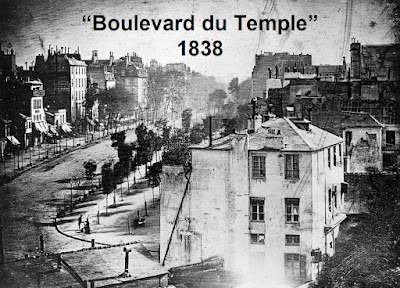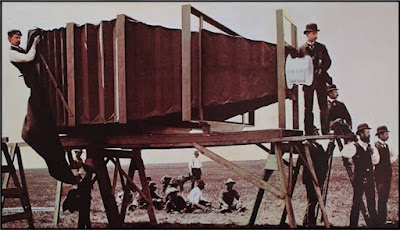September 25, 2021
Since most of us have long since sold our old 35 mm cameras (if we ever owned one in the first place) most of our photographic efforts will never be called photographs. They are pictures, or worse – snap shots (what a great name “snap shot” we just aim a photo-taking device at a potential subject and snap off a few shots).
Never mind lining anything up.
Never mind that object in the background that will appear to be growing out of your significant other’s head.
And it won’t matter anyway, because the sun is either directly in their face making them squint.
Or directly behind their head swathing their face in opaque black.
Does that sound like most of your vacation camera activity?
Welcome to the club!
Caveat emptor! You know that Latin term – “let the buyer beware.” It’s similar to “sold as is.” The buyer assumes the risk that a product may fail to meet expectations . So. Caveat emptor. If you do not call your camera activity “photographs,” “pictures,” or “snap shots,” but instead call them “exposures,” you get to teach the next class. That’s what “real photographers” call them.
If you think “exposure” is an old man in a trench coat displaying his saggy, wrinkly wears to unsuspecting women, stick with me – we can learn something together. And if you really do call them “exposures,” we will be very grateful to learn from you!
Remember, all phones and cameras are different, so your mileage may vary with any given tip. Because of that, I am going to avoid talking about particularly apps as much as possible because what might be 5 stars on my Samsung Galaxy S10 might not rate half a star on yours.
There’s a large contingent of photo enthusiasts who will dismiss a photo straight away if they find out it was taken with a smartphone. The rally cry of “get a real camera” can be heard echoing through the rafters. If you don’t twitter, aren’t a twit, you can go to “getarealcamera.com” on Twitter and really be insulted. Some folks think everyone should have a dedicated camera, but a good photo is a good photo, regardless of the gear used to take it.
Camera phones have some inherent strengths and weaknesses, but by emphasizing the good and downplaying the bad, you can silence naysayers. Smartphone cameras are getting better every year, but some things never change. These tips will help you get better photos. And no, using a selfie stick isn’t one of them!
I come to this talk today having owned, and used, a Brownie camera. I had a photographic darkroom with an enlarger, trays, chemicals, paper safe, and appropriately colored lights (I asked my girl friend to accompany me so we could see what developed. If we’d been discovered, we’d’ve been in the fixer for sure). I bought bulk black and white film and loaded my own film canisters. I owned an early Polaroid-Land camera. I had several 35 mm cameras, including the “Cadillac” of its day – the Minolta XD11. I have an early digital camera – Sony Mavica which takes photographs on 3.5 inch floppy disks.
With all of that “history” let me give you a few highlights into the hobby which brings you to this auditorium. And then we’ll make some exposures.
The first photograph taken and preserved was taken in 1825 by a French inventor Joseph Nicéphore Niépce. It depicts a view from his window. Due to the technical issues the exposure had to last for eight hours, so the sun had time to shine across the composition. Recent research suggests that the exposure may have taken several days.
Niépce came up with the idea “saving the light” by using a petroleum derivative called “Bitumen of Judea”. Bitumen hardens with exposure to light so the unhardened material was then washed away with lavender oil. This first photograph was made on a polished sheet of pewter.
In partnership, Niépce and Louis Daguerre refined the bitumen process that yielded higher-quality and more easily viewed images.
“Boulevard du Temple”, a daguerreotype made by Louis Daguerre in 1838, is generally accepted as the earliest photograph to include people. It is a view of a busy street, but because the exposure time was at least ten minutes the moving traffic left no trace. Only the two men near the bottom left corner, one apparently having his boots polished by the other, stayed in one place long enough to be visible.
In October, 1839, Robert Cornelius produced the first known photographic portrait of a human in world history and the first known selfie. He sat unmoving in front of the lens for 5 minutes, then got up and put the cap on.
In July 1888 George Eastman’s Kodak camera went on the market with the slogan “You press the button, we do the rest.” For $25 you purchased the camera, and sent it back to Kodak’s lab with the exposed film inside, along with $10. Kodak would send your 100 pictures back, along with a freshly loaded camera. Now anyone could take a photograph and leave the complex parts of the process to others.
In early 1900 the world’s largest camera was unveiled in Chicago. The 900 pound camera, designed by George R. Lawrence, was to take the largest possible photograph of “The Alton Limited”, the pride of the Chicago & Alton Railway for the Paris Exposition of 1900. The picture, produced by glass plates would be 8 x 4½ feet in size.
Lawrence won the “Grand Prize of the World for Photographic Excellence.”
The Trojan Room coffee pot was the inspiration for the world's first webcam. The coffee pot was located in the corridor just outside the so-called Trojan Room within the old Computer Laboratory of the University of Cambridge, November, 1993.
Next week, tips for taking better pictures.
👉 Today’s close, “Grace teaches Us how to Live,” is by Max Lucado.
Do we ever compromise tonight, knowing we’ll confess tomorrow?
It’s easy to be like the fellow visiting Las Vegas who called the preacher, wanting to know the hours of the Sunday service. The preacher was impressed. “Most people who come to Las Vegas don’t do so to go to church.”
“Oh, I’m not coming for the church. I’m coming for the gambling and parties and wild women. If I have half as much fun as I intend to, I’ll need a church come Sunday morning.”
Is that the intent of grace? Is God’s goal to promote disobedience? Hardly. “Grace ... teaches us not to live against God nor to do the evil things the world wants us to do. Instead, that grace teaches us to live now in a wise and right way and in a way that shows we serve God” (Titus 2:11-12). God’s grace has released us from selfishness. Why return?
Someone who sees grace as permission to sin has missed grace entirely. Mercy understood is holiness desired.
-30-

















No comments:
Post a Comment